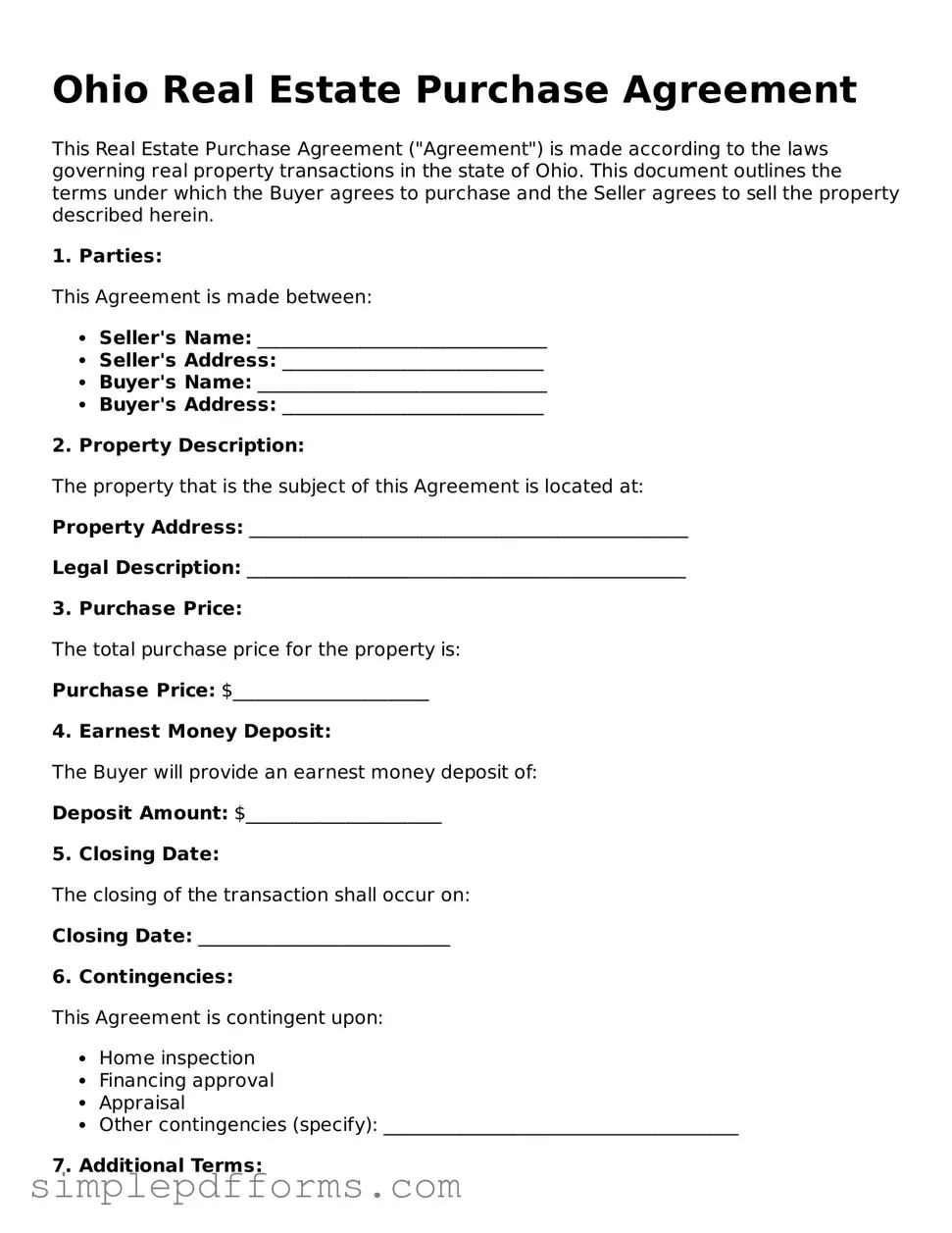Ohio Real Estate Purchase Agreement
This Real Estate Purchase Agreement ("Agreement") is made according to the laws governing real property transactions in the state of Ohio. This document outlines the terms under which the Buyer agrees to purchase and the Seller agrees to sell the property described herein.
1. Parties:
This Agreement is made between:
- Seller's Name: _______________________________
- Seller's Address: ____________________________
- Buyer's Name: _______________________________
- Buyer's Address: ____________________________
2. Property Description:
The property that is the subject of this Agreement is located at:
Property Address: _______________________________________________
Legal Description: _______________________________________________
3. Purchase Price:
The total purchase price for the property is:
Purchase Price: $_____________________
4. Earnest Money Deposit:
The Buyer will provide an earnest money deposit of:
Deposit Amount: $_____________________
5. Closing Date:
The closing of the transaction shall occur on:
Closing Date: ___________________________
6. Contingencies:
This Agreement is contingent upon:
- Home inspection
- Financing approval
- Appraisal
- Other contingencies (specify): ______________________________________
7. Additional Terms:
Any additional terms and conditions agreed upon by both parties can be outlined here:
Additional Terms: ______________________________________________
8. Signatures:
By signing below, both parties agree to the terms and conditions set forth in this Agreement.
______________________________ Seller's Signature Date: ______________
______________________________ Buyer's Signature Date: ______________
Please note that this template is a general guideline. It is advisable to consult with a legal professional for specific situations and to ensure compliance with local laws and regulations.
